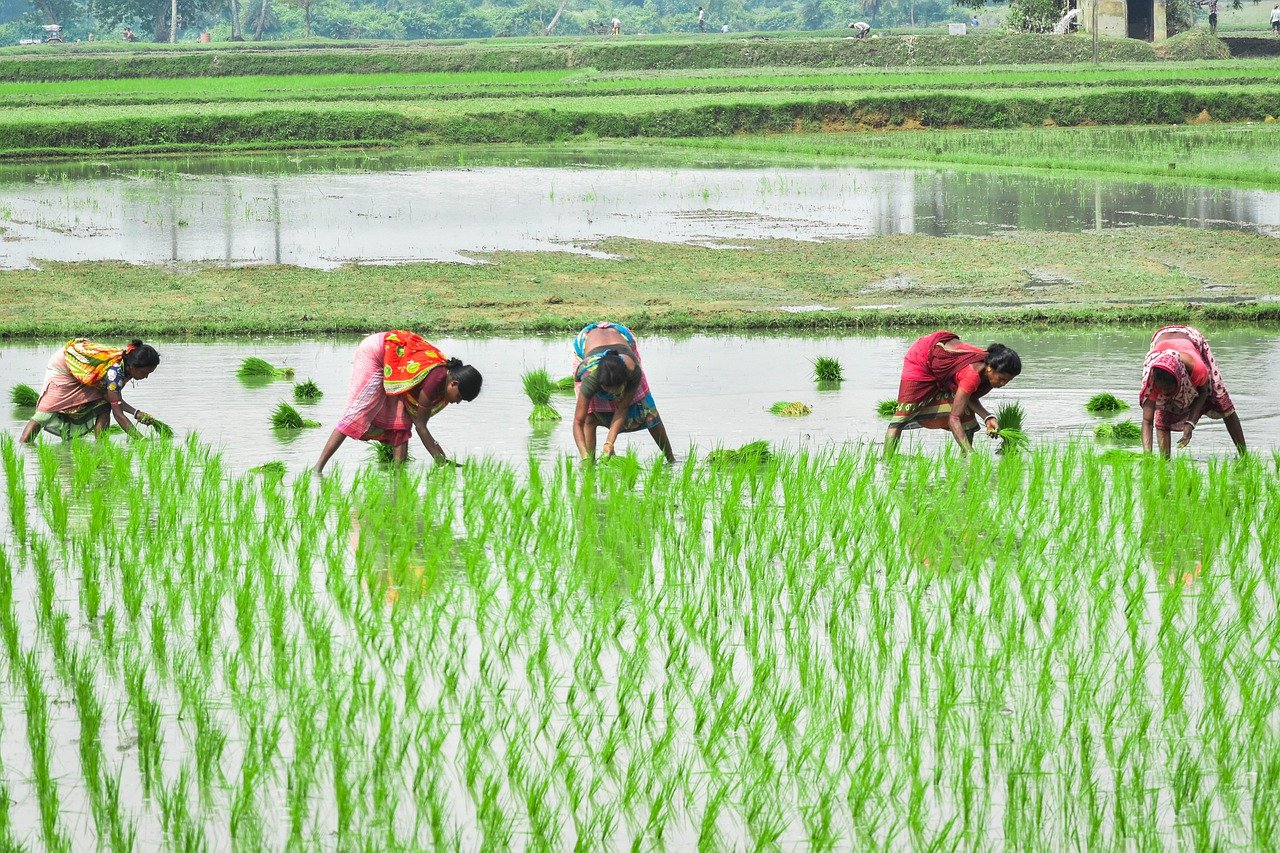India’s agricultural sector has for long been mired in issues of low productivity, land fragmentation, poor infrastructure, and inadequate delivery mechanisms among others that have often rendered farmers, victims of a system, without proper regulatory mechanisms. The requirement for better infrastructure, technology, and quality-produce has been at the forefront while pushing for more private investment into the sector. However, real gains in agriculture can only be seen when all farmers gain equal access to this investment and receive fair benefits.
Around 126 million farmers in the country, as of today, are small and marginal farmers with an average holding size of 0.6 hectares. It means they cannot produce a surplus and can barely sustain their families, a leading factor in the agrarian crisis that has befallen India.
India’s agrarian crisis: A quick snapshot
In India, small and marginal farmers makeup 86.2% of all farmers in India but own only 47.3% of crop area. Around 126 million farmers in the country, as of today, are small and marginal farmers with an average holding size of 0.6 hectares. It means they cannot produce a surplus and can barely sustain their families, a leading factor in the agrarian crisis that has befallen India. Fragmentation of holdings also hinders access to government-offered new technology and farm support schemes fundamental to making the sector profitable. Experts believe that the only way out is to provide farmers with access to better technology and markets and to make small farms more economically viable through diversification into high-value crops and massive capital investments in value chains.
To address these issues, the government recently passed three agricultural reform bills–The Farmers’ Produce Trade and Commerce (Promotion and Facilitation) Bill, 2020; The Farmers (Empowerment and Protection) Agreement of Price Assurance and Farm Services Bill, 2020; and The Essential Commodities (Amendment) Bill, 2020. Essentially, the bills break the monopolistic powers of the Agriculture Produce Management Committee (APMC) markets, allow contract farming, and remove stocking limits on traders for many commodities, with some caveats still in place.
Among the concerns raised, many believe that enabling contract farming will leave small farmers vulnerable and at the mercy of private players, leaving them worse off than before.
The bills, in the views of many, are inherently anti-farmer in nature, triggering farmer protests across the country and the Union Minister for Food Processing Harsimrat Kaur Badal resigning in protest. Among the concerns raised, many believe that enabling contract farming will leave small farmers vulnerable and at the mercy of private players, leaving them worse off than before.
Reforms and changes to liberalize the Indian Agri-market was long due, with bills of similar nature pursued both at the Union and State level.
Liberalization of Indian agriculture through the years
In fact, the first attempt at the reforms in agricultural markets was made by the union government in 2003 with the model Agricultural Produce Marketing Committee (APMC) Act, which made new market channels, such as direct purchase, private wholesale markets, and contract farming (CF), legal for farmers and buyers alike. Set against the backdrop of poorly functioning APMC markets (regulated and unregulated), that even today cannot deliver MSPs to the farmers, the bill pushed States to amend their own APMC Acts. Today, in all major agricultural States, there are many cases of contract farming and direct purchase by various groups of traders dealing with farm produce. Yet contract farming faced setbacks, as it was still within the APMC domain and hence saw a conflict of interest with even traders and commission agents strongly opposing it.
In order to resolve this deadlock, a new and improvised Agricultural Produce, and Livestock Marketing (Promotion and Facilitation) Act, 2017 (APLMA, 2017) was passed by the government in order to take contract farming out of the APMC domain. This led to the birth of a separate model act on Agricultural Produce and Livestock Contract Farming and Services 2018 (Promotion and Facilitation – APLCFS2018). Among other major provisions, the act mandated the removal of market fees and commission charges to buyers resulting in a saving of 5%–10% of transaction cost, thus making the market more conducive to private players. However, all said and done, contrary to popular belief, the Indian experience with contract farming (CF) is not new.
The first widely acknowledged incident of contract farming in the Indian context was the entrance of Pepsi Foods Ltd. into Punjab in 1989. The company intended to specifically focus on exports of value-added processed foods. This led to the birth of PepsiCo’s backward linkage with farmers of Punjab. The PepsiCo model of contract farming opened up new options for farmers, led to productivity increase, and introduced modern technology for the tomato crop. Following the Pepsico example, local firms such as Nijjar in Punjab and Bhilai Engineering in Madhya Pradesh also took up a tomato contract cultivation.
The Indian experience with Contract Farming: Are farmers really benefitting?
Studies of the CF system in India have tried to establish whether crops under the contract system have better outcomes than those under non-contracts/traditional systems. Findings show that contract production gave much higher gross and net returns compared with that from the traditional crops of wheat, paddy, and potato, those under non-contract situations. This was because of the higher yield and assured price under contracts and better-quality inputs.
The Punjab and Haryana CF experience has been far from satisfactory with studies revealing that contract growers faced many problems like the undue quality cut on produce by firms, delayed deliveries at the factory, delayed payments, low price, and pest attack on the contract crop which raised the cost of production. The firms also manipulated provisions of the contracts in practice and also delayed payments up to 60 days. But it locked growers into these contracts because of the firm-specific fixed investments they had made.
It is clear then that CF often protected company interest at the expense of the farmer and did not cover farmer’s production risk e.g. crop failure, and kept the right of the company to change price, and offered prices based on open market prices.
It is clear then that CF often protected company interest at the expense of the farmer and did not cover farmer’s production risk e.g. crop failure, and kept the right of the company to change price, and offered prices based on open market prices. This is a serious issue as market prices are volatile and even premiums may not help a farmer if market prices go down significantly, which is not uncommon in India. (MSPs which benefit only 6% of Indian farmers have also been historically low in recent times)
Contract farming in India was also mainly carried out with only large and medium farmers. This bias in favour of large/medium farmers perpetuated the practice of reverse tenancy in regions like Punjab where contract farmers leased inland from marginal and small farmers for contract production, creating even larger issues of land control versus ownership.
Given the big farmer preference and the pernicious harms that CF brings with it, the heralding of a new era of Agri reforms thus rightfully raises the question of what the road ahead looks like for small farmers in India.
The road ahead: Viable modes of contract farming for Indian farmers
The only way that small farmers can realistically realize returns and stand their ground is through organizing themselves in the form of Farmer- producer organizations, bargaining cooperatives, and group contracts. Producer organizations are beneficial as they amplify the political voice of smallholder producers, create opportunities for producers to get more involved in value-adding activities such as input supply, credit, processing, marketing, and distribution. They also lower the transaction costs for the processing/marketing agencies working with growers and negotiate fair contracts for buyers and growers. The legal system in India has made available the organizational option of the Producer Companies (co-operative companies) under the Companies Act, in which farmers in many states have gone ahead with various existing and new projects.
Another form of organization that can be explored is that of New Generation Co-operatives (NGCs) which are voluntary, more market-oriented, member responsive, self-governed, and avoid free-riding and horizon problems as they have contractual equity-based transactions with grower members and limited membership.
Collective action through cooperatives or associations is important not only to reduce the information asymmetry between the growers and the firm, but also to help small farmers adapt to new patterns and greater levels of competition.
Collective action through cooperatives or associations is important not only to reduce the information asymmetry between the growers and the firm, but also to help small farmers adapt to new patterns and greater levels of competition. Thus, there is a need to promote/encourage farmer groups for CF as in Thailand where besides contract grower groups, the potato growers co-operative also dealt with a multinational contracting company on behalf of its members.
On legal grounds, there needs to be a serious consideration of protection accorded to contract growers as a group. In Japan, subcontracting agencies have seen legal protection given to them in their relations with large firms. These laws specify the duties and forbidden acts for the large parent firm such as defaulting on payments and are monitored and kept in check by the Fair Trade Commission. Necessary safeguards and flexible systems need to come in the legal sphere to protect small farmer interests. The new 2020 Agri bills largely leave regulation out of the purview of government responsibility and have no mention of how contracts are to be regulated.
State support to CF arrangements needs to account for the size of holdings else it will not be beneficial to small farmers at all. In Thailand, the state not only provided coordination and support of local authorities but also initially provided interest compensation to farmers to encourage participation and lower costs. Subsequently, the practice was replaced by low-interest loans. They gave training in CF to farmers and state intervention helped the farm sector by promoting competition.
Policy design should focus on small farmers
The glaring problem that burdens small farmers is that they are simply not assured of a strong support mechanism from private players to protect their interests in aspects like delayed payments and deliveries, contract cancellation damages, inducement/force/intimidation to enter a contract, disclosure of material risks, competitive performance-based payments, and sharing of production risks. Only when they can be guaranteed that they will not be exploited on such grounds can the benefits of CF arrangements materialize.
Thus policies concerning the design of contract agreements need to be fair and should ensure clauses on increased competition for procurement instead of monopsony, a guaranteed market for farmer produce, effective repayment mechanism, market information for farmers to effectively bargain with companies, a commitment to fair sharing of risk and innovating pricing mechanisms( bonus, fixed price, share in equity, and quality-based pricing).
The 2020 Agri bills may have been too ambitious in opening up markets to private players without locking-in adequate safeguards for farmers.
Contract farming is not a panacea to the issues that plague the agricultural sector in India. It is not an end but a welcome step towards agricultural development. The 2020 Agri bills may have been too ambitious in opening up markets to private players without locking-in adequate safeguards for farmers. If contract farming needs to see returns in the Indian context, it cannot do so until it recognizes that the twin planks of efficiency and inclusivity need to go hand in hand.
Image: Rice fields by Nandlal Sarkar from Pixabay












1 comment
Good job Lisa.. Keep going👍